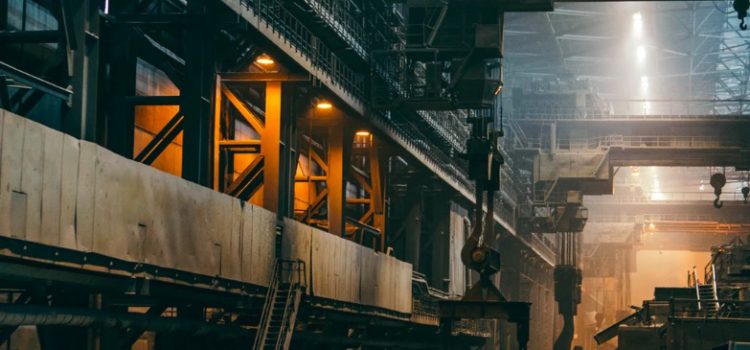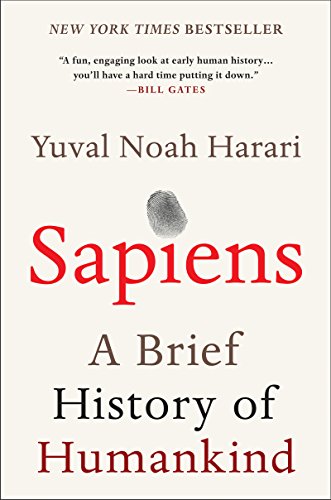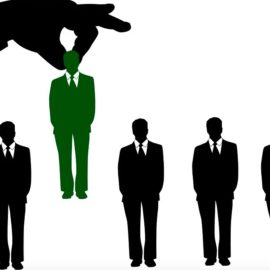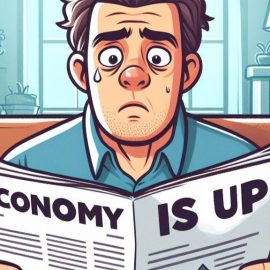

This article is an excerpt from the Shortform summary of "Sapiens: A Brief History of Humankind" by Yuval Noah Harari. Shortform has the world's best summaries of books you should be reading.
Like this article? Sign up for a free trial here .
What were the social impacts of the Industrial Revolution? What effects of the Industrial Revolution remain in our society today?
We’ll cover the Industrial Revolution and its consequences: artificial time, the rise of the state and market, and relative peace. We’ll also look at how the Industrial Revolution gave rise to the idea of individualism.
The Social Impact of the Industrial Revolution
The Industrial Revolution caused many upheavals to society, including urbanization, the rise in power of the common person, the decline of patriarchy, and democratization. But the two biggest upheavals to society were artificial time and the replacement of family and community with state and market.
Social Effect #1: Artificial Time
One social impact of the Industrial Revolution was the industrialization of time, our turn away from natural time to mechanized time.
Agricultural v. Industrial Time
Most societies in history couldn’t make accurate measurements of time, and it didn’t really matter. Time was dictated by the day and the seasons. This was “agricultural time.” The sun told you when to wake up and go to work and when to go home and go to sleep, and it also told you when to harvest your crops and when to plant new ones. You didn’t need a more accurate measure of time than where the sun was in the sky.
But with the rise of the Industrial Revolution, precise time started to matter. Let’s see why: if you’re a shoemaker in medieval times, you make every part of the shoe, from the sole to the buckle. If another shoemaker shows up late for work, it doesn’t affect you. But if you work in a factory that makes shoes today, and your job is to work the machine that makes the sole, others depend on you to do your role promptly. If you’re late for work, and the soles don’t get made, it holds up the process for everyone else.
Businesses needed a way to keep everyone on the same schedule, so they mandated that every worker come to work at the same time (regardless of where the sun was in the sky), eat lunch at the same time (regardless of whether they were hungry), and leave at the same time (regardless of whether they’d finished their project). This was a major social effect of the Industrial Revolution
Timetables Take Over
These schedules became the model for almost everything we do in our day-to-day lives, even those things that don’t involve coordinating with other workers. This is the social impact of the Industrial Revolution today.
The railway system played a large part in popularizing the use of timetables. In Britain in 1784, each city had its own local time, dependent on the rise and setting of the sun. Before easy transportation and communication between cities, it didn’t matter that each city ran on its own time. But the development of faster trains in 1830 meant people could get to other cities more easily, and the time discrepancies became an inconvenience. The train companies started making schedules according to Greenwich Observatory time rather than local times. This prompted the first establishment of a national time, in 1880, and Brits had to start living according to an artificial clock rather than the natural time dictated by the position of the sun in the sky.
Today, we do everything according to artificial time, and it’s hard to not know what the time is: it’s on your watch, your phone, your laptop, TV, and the microwave.
Social Effect #2: Replacement of Family and Community with State and Market
Another social impact of the Industrial Revolution was the rise of the state and market. Traditionally, you lived your life in the bubbles of three levels of intimate groupings.
- The nuclear family: your parents and siblings
- The extended family: your cousins, aunts, uncles, and grandparents
- The local intimate community: the people in your community you know well and on whom you depend for survival
In the past, these three sub-communities provided almost everything you needed to survive. Even with the rise of markets, Sapiens bought fewer than 10% of their products and services from people outside their sub-communities. They depended on the economy of favors. You would help your neighbor repair his roof after heavy rains without expecting any payment, and you would expect him to help you repair your roof if it leaked.
The rise of kingdoms didn’t change the reliance of individuals on these three levels of community. It was difficult for rulers of kingdoms to be involved in the daily lives of subjects, even if they wanted to be. Agricultural communities didn’t produce enough surplus to feed a police force, teachers, and social workers, so communities had to meet these needs on their own. The lack of ease of transportation and communication also meant that rulers couldn’t micromanage the towns under their jurisdiction. They mainly built infrastructure like roads and provided protection in times of war.
But these sub-communities started to disintegrate. The Industrial Revolution diminished the importance of family and community by empowering the market, making transportation and communication easier, and giving governments the means to provide towns with teachers, policemen, and social workers. The market—the world of buying, selling, and advertising—and the state came to influence almost every aspect of our lives. This was, perhaps, the biggest social impact of the Industrial Revolution.
The Promise of Individualism
The state and the market convinced us to sever family and community ties by selling us on the dream of individualism. We were told that if we became individuals, we could marry whomever we wanted, have whatever job we wanted, and live wherever we wanted. The state and the market assured us that they would take care of us, providing the food, shelter, employment, insurance, and protection that was previously provided by families and communities. The state and the market gave us choices that weren’t available when we depended solely on our communities, and this was too attractive to pass up.
Markets and States Have Replaced Families and Communities
| Then (Dependence on Families & Communities) | Now (Dependence on Markets & States) | |
| In times of sickness: | Your family took care of you | You depend on health insurance |
| When in need of work: | You worked in the family business or the neighbor’s business | You depend on the market for work |
| When in need of an education: | Your parents, grandparents, and older siblings taught you | You attend government-run schools or private schools with curricula influenced by government policy |
| When desiring to open a business: | Your family raised the money | The bank loans you money |
| When desiring to marry: | Your family chose (or at least vetted) your spouse | You court in bars or online and pay designers, gym owners, and dieticians to help you meet beauty standards set by the market |
| When desiring to build a house: | Your family helped you build it | You hire a construction company and get a mortgage from the bank |
| In times of conflict: | Your family defended you | The police protect you |
| In old age: | Your children supported you and served as your pension fund | You hire a nurse or live in a senior citizens’ home |
While dependence on the state and market rather than family and community give us more employment, travel, and marriage opportunities, this dependence has also weakened us. When were alienated and untied from families and communities, it’s easier for the market to exploit us and the state to persecute us. We’re weaker as individuals than we were as a group. This is one of the social consequences of the Industrial Revolution
Social Effect #3: Peace–A Third Major Change?
The widespread adoption of artificial time and the replacement of family and community with the state and market were huge, lasting changes in society. Could we count peace as one of the major social impacts of the Industrial Revolution?
We tend to think of our era as a violent one, but since World War Two, we’ve been living in the most peaceful era in history. Because we didn’t live thousands of years ago when the human world was particularly violent, we don’t know how relatively peaceful our time is, and as wars become less frequent the ones that do occur get more attention.
Lasting Peace?
War is no longer part of everyday life, no longer the norm, as it was before the Industrial Revolution. Whereas it used to be routine for a state to conquer neighboring states, that’s rare now. Not only do we not conquer other territories, but we also don’t cling to ones that used to be ours: Throughout history, the collapses of most empires have been violent bloodbaths, but since World War II, most empires have collapsed relatively peacefully, including the British Empire, the French Empire, and the Soviet Union.
Real peace isn’t just the absence of war. It’s the implausibility of war. We now see international wars as highly unlikely. This has never happened in history before now. At the moment, it seems implausible that there will be major wars in the future, although there are a few exceptions (Israel and Syria, or the USA and Iran, for example). How did war become implausible?
1. The increased cost of war: The advent of nuclear weapons increased the financial cost of war, but more importantly, it increased the cost in human lives and threatened the very existence of individual nations. Because the use of nuclear weapons could be “collective suicide,” no country wants to use the most powerful weapons it has. Consequently, no single nation can establish international dominance through its weaponry. This decreases the likelihood of war.
2. The decreased profits of war: Nations used to become rich by looting from the territories they conquered. They could do this because wealth existed primarily in the form of material goods like fields, slaves, and gold. Today, wealth often isn’t material. For instance, California’s wealth initially came from its gold mines. But now, California’s wealth comes from the tech and film industries. The riches exist only in the minds of Silicon Valley engineers and Hollywood directors. If China wanted to invade California, they wouldn’t be able to loot much of value. This decreases the likelihood of war.
3. The increased profits of peace: The importance of foreign trade means that peaceful foreign relations are profitable. The U.S. and China are incentivized to maintain peaceful relations because they both benefit from their mutual trade.
4. The rise of pacifism: We’re in the first era in history in which war is generally seen as evil and the elite wants peace rather than colonization.
5. The interdependence of countries: The prior four reasons reinforce one another: The fear of nuclear destruction leads to pacifism. Pacifism leads to a flourishing of trade relations. Trade makes peace more profitable and war more costly. Most importantly, governments can no longer function independently. No country is powerful enough to initiate a war on its own. The widening of society’s borders to encompass the whole world practically enforces international peace.
The relative peace of our modern world may be the biggest social impact of the Industrial Revolution.
———End of Preview———

Like what you just read? Read the rest of the world's best summary of "Sapiens" at Shortform . Learn the book's critical concepts in 20 minutes or less .
Here's what you'll find in our full Sapiens summary :
- How Sapiens outlived and outlasted the 8+ other human-like species on Earth
- The 3 critical revolutions in human existence that led to our domination of the planet
- How much of what powers our world today is really just a shared mass delusion
- What the future of humanity might look like






